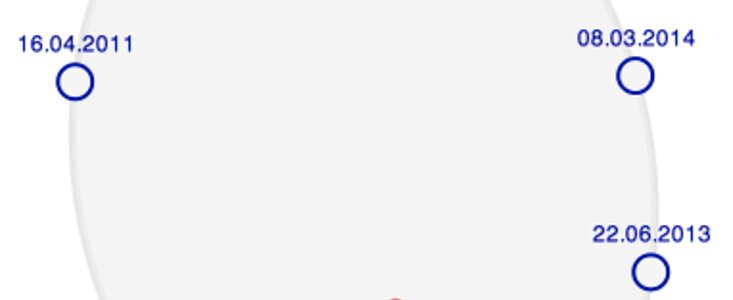NOAO: A Sharp Eye on Southern Binary Stars
16 Abril 2014
Unlike our sun, with its retinue of orbiting planets, many stars in the sky orbit around a second star. These binary stars, with orbital periods ranging from days to centuries, have long been the primary tool for measuring basic quantities like the star’s mass. While masses of normal stars are now well determined, some binaries present special interest because their stars are unusual (e.g. very young) or because they may contain planets, gas clouds, or other stars.
Now, astronomers at the Cerro Tololo Inter-American Observatory (CTIO) and at the US Naval Observatory (USNO) are making use of the latest technology, speckle imaging, to measure the separation of close binary stars. By observing them over a period of years, their obits have been determined with exquisite precision.
Using the new speckle camera at the 4.1-m Southern Astrophysical Research Telescope (SOAR) in Chile with its novel electron-multiplication CCD detector, the team is able to measure the angular separation of stars down to 25 milli arcseconds: this is equivalent to measuring the size of a quarter atop the Empire State building in New York - from Washington, DC. This is over 2000 times better than the human eye can resolve. As Dr. Andrei Tokovinin, the lead author on the paper, said: “This camera surpasses adaptive-optics instruments at the 8-m telescopes, which work in the infrared and can only resolve binaries wider than 50 milli arcseconds.“
The team, which includes astronomers from SOAR and from the USNO, has not only been observing previously known binary systems for which older data are very poor, but is also finding new double and multiple systems. The attached animation shows the system HIP 83716, known to be double for over a century. But until the SOAR camera examined it, nobody realized that the companion star was also a binary, making this a triple system. The wide pair A,B orbit each other in about 520 years, while the newly discovered pair Ba, Bb orbit each other in just 6.5 years.
Over the past seven years, the speckle camera on SOAR has observed almost 2000 objects, both previously known and newly discovered binaries. This is a unique dataset in terms of quantity and quality: prior to this project such measurements of southern binaries were made only occasionally by the team from the USNO.
Recent observations made at SOAR in 2013 are reported in a paper by A. Tokovinin (NOAO), B. Mason, and W. Hartkopf (both from USNO) accepted by the Astronomical Journal in February 2014.
Más Información
CTIO is a division of the National Optical Astronomy Observatory, operated by Association of Universities for Research in Astronomy Inc. under a cooperative agreement with the National Science Foundation.
Contactos
Dr. Andrei Tokovinin
Cerro Tololo Inter-American Observatory
Casilla 603 La Serena, CHILE
Tel: +56 51 205 206
Correo electrónico: atokovinin@ctio.noao.edu
About the Release
| Release No.: | noao1402 |
| Legacy ID: | NOAO 14-03 |
| Facility: | SOAR Telescope |
| Instruments: | CCD |
| Science data: | 2014AJ....147..123T |



